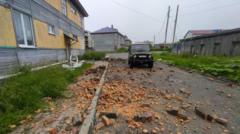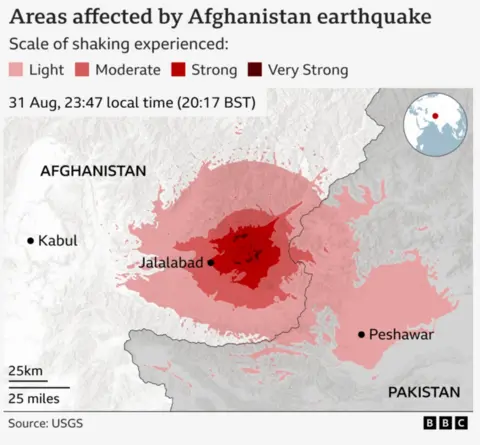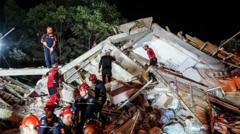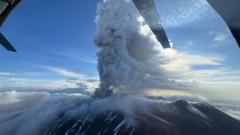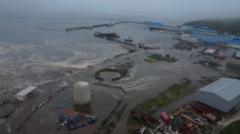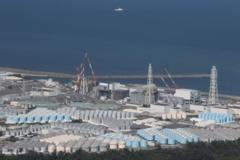On Wednesday, an 8.8-magnitude earthquake struck eastern Russia's Kamchatka Peninsula, raising alarm over potential tsunami threats across the Pacific. Evacuations were swiftly enacted, recalling memories of monumental tsunamis in 2004 and 2011 that resulted in widespread devastation. However, this earthquake surprisingly triggered a tsunami of much lesser magnitude than initially feared, leading experts to question why the event did not result in a catastrophe.
The Kamchatka Peninsula lies within the “Pacific Ring of Fire,” a region known for its high seismic activity due to the movement of tectonic plates. The Pacific Plate is colliding with the smaller Okhotsk microplate, a phenomenon that can lead to significant geological disturbances known as megathrust earthquakes. These powerful ruptures typically generate large tsunamis, as seen in previous notable seismic events.
However, today's tsunami bore waves of only approximately 4 meters (13 feet) — far less than the towering walls of water observed in past earthquakes. Various factors contribute to the tsunami size, including the geological features of the seafloor and the shape of the coastline, which play significant roles in the eventual height and reach of the waves.
Depth is another influential factor. The earthquake occurred at a depth of about 20.7 kilometers (12.9 miles), which, while significant, can lead to scenarios where the resulting tsunami is less catastrophic depending on the nuanced geological circumstances at that depth. Experts believe that should the earthquake’s depth have been erroneously shallow, it could potentially explain the reduced tsunami amplitude.
Furthermore, advancements in early warning systems across Pacific coastal nations limited the tsunami's impact. Countries now maintain established tsunami response protocols that alert populations well in advance, marking a stark contrast to the lack of such systems during previous disasters.
Despite the significant earthquake's potential for destruction, the combination of geographical elements and procedural advancements in disaster response likely minimized the expected repercussions. As scientists continue to monitor the area for aftershocks, the event exemplifies the complex interplay of nature and technology in addressing the risks of such formidable natural disasters.

